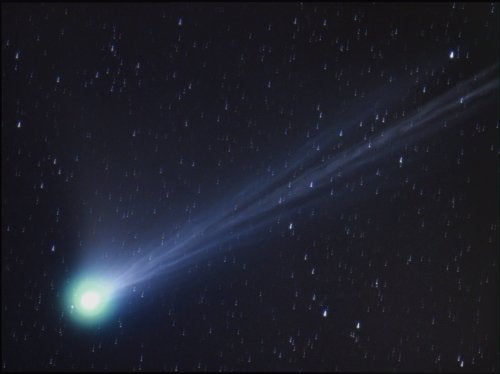
Composition: Astronomer Fred Whipple created the term “dirty snowballs” as a description of comets. These bodies are made of dust, rocks, organic compounds, and ice. Ice, in the form of dry ice, water ice, and various frozen gases, makes up most of the comet. Comets have three parts: nucleus, coma, and tail.
Size: A comet nucleus can range in size from less than a mile (1 kilometer) to 15 miles (25 km) across. The longest comet tail, which measured over 354 million miles (570 million kilometers), belonged to Comet Hyakutake in May 1996.
Location: Thought to be leftovers of the early solar system, comets originate from the Oort Cloud — an area of cometary nuclei that surrounds the Sun at a distance of thousands of astronomical units. When a nucleus gets closer to the Sun, the ice melts and a tail is created.
Orbit: Orbit lengths vary among comets. Orbital periods can last from less than a century to over 100,000 years.
Number: Astronomers believe there could be as many as one trillion comets in the Oort Cloud.
Other information: Throughout history, comets were seen as good or bad omens. In 1066, Queen Matilda, wife of William the Conqueror, commissioned the famous Bayeux Tapestry after Comet Halley appeared in the sky for months before the Battle of Hastings.
The European Space Agency’s Rosetta spacecraft will be the first to undertake the long-term exploration of a comet at close quarters. Currently on its way to Comet 67P/Churyumov-Gerasimenko, Rosetta will eventually reach its target in May 2014.









